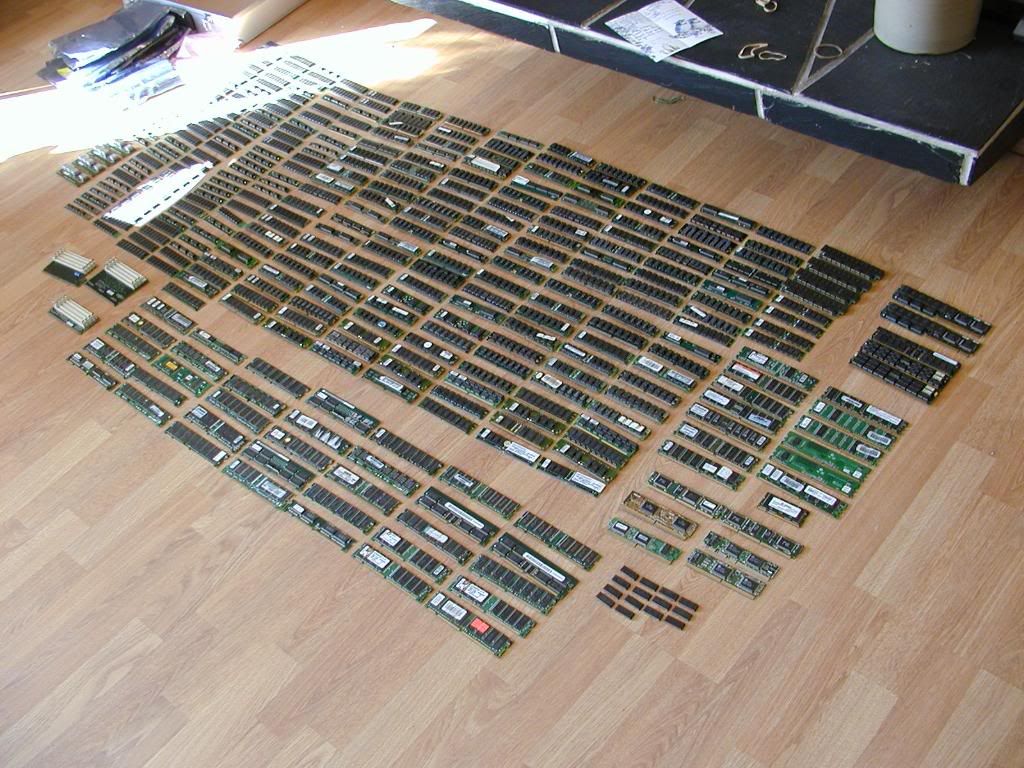NeXT
Veteran Member
I'm sure I'm not in the same boat here. 
I knew years ago that as time passed, older types of ram would become more and more scarce so whenever I saw stuff pass through the landfill I grabbed it and tossed it in a box to later sort it into antistatic bags in relation to the type of SIMM.
I'm now curreantly standing at this:

I have a little bit of everything...most of it 72-pin SIMMS...however finding what I need is a royal pain. 90% of it is not properly marked so if I need something specific I gotta try each stick one by one until I find it. It would be a hell of a lot niver if I could have a piece of tape on each stick that told me the type, speed, and size. I could do this by googling the part numbers on the sticks or chips but that will also throw a lot of false results and chinese datasheets and I don't ahve forever to sort through it all for each stick. Is there anything out there I can use to rather quickly look up the info I need for each stick?
I knew years ago that as time passed, older types of ram would become more and more scarce so whenever I saw stuff pass through the landfill I grabbed it and tossed it in a box to later sort it into antistatic bags in relation to the type of SIMM.
I'm now curreantly standing at this:

I have a little bit of everything...most of it 72-pin SIMMS...however finding what I need is a royal pain. 90% of it is not properly marked so if I need something specific I gotta try each stick one by one until I find it. It would be a hell of a lot niver if I could have a piece of tape on each stick that told me the type, speed, and size. I could do this by googling the part numbers on the sticks or chips but that will also throw a lot of false results and chinese datasheets and I don't ahve forever to sort through it all for each stick. Is there anything out there I can use to rather quickly look up the info I need for each stick?
